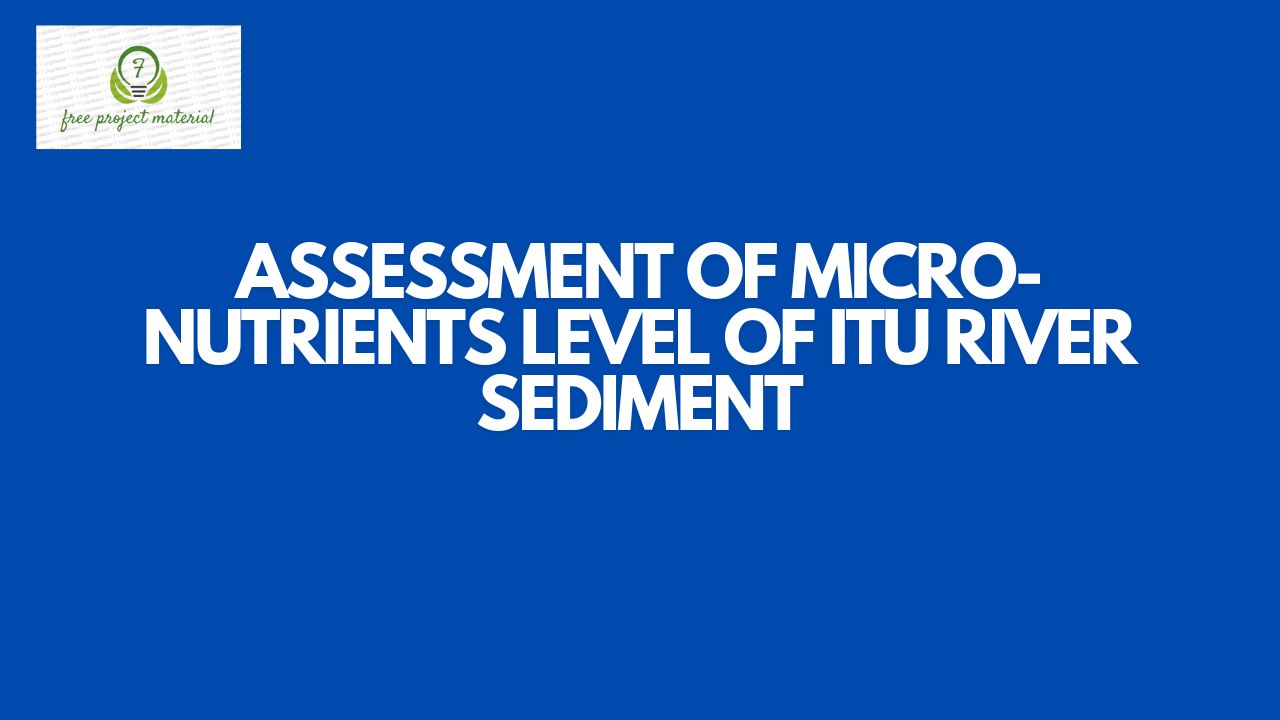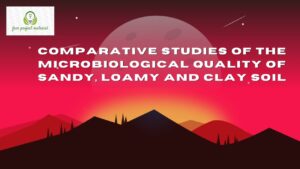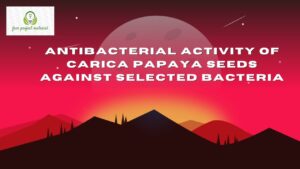ABSTRACT
Farming, human settlement, flooding and cutting of firewood are the human related activities exerting pressure on the Itu River System. Other perturbations include dumping of wastes oil spills from outboard engines etc. these activities could negate the benefits derived from the river as it harbor a lot of fish species as well as being a source of drinking water to the locals. This is because adverse amount of micronutrient through depositions by obnoxious activities, could spell doom for benthos and even pelagic fishes as well as human at the end of the food chain. In bid to ascertain the micronutrients level of the water sediment of Itu River, the digestion process was applied. All values were within the permissible range set by the WHO. Zinc (5.2 mg/kg) was marginally higher than the permissible range but not alarming. Cu (4.2 mg/kg) ranked second on the result table after zinc, while magnesium ranked third. Nickel and chromium were not detected and this was attributed to absence of the possible factors which could generate them. From these results, the micronutrients levels of water sediment of Itu River are safe for benthos.
TABLE OF CONTENTS
Title Page – – – – – – – – – i
Certification – – – – – – – – ii
Dedication – – – – – – – – – iii
Acknowledgements – – – – – – – iv
Abstract — – – – – – – – – v
Table of Content – – – – – – – – vi-vii
CHAPTER ONE: INTRODUCTION
1.1 Background of the Study – – – – – – 1-2
1.2 Aim of the Study – – – – – – – 3
1.3 Objective of the Study – – – – – – 3
1.4 Definition of Terms – – – – – – – 3
1.5 Scope of the Study – – – – – – – – 4
1.6 Limitations of the Study – – – – – – 4
1.7 Significance of the Study – – – – – – 5
CHAPTER TWO: LITERATURE REVIEW
2.1 Trace Element – – – – – — – 6
2.1.1 Copper (Cu) – – – — – – – 6
2.1.2 Zinc (Zn) – – – – – – – – 6-7
2.1.3 Magnesium (Mg) – – – – – – – 7-9
2.1.4 Nickel (Ni) – – – – – – – 9-10
2.1.5 Chromium (Cr) – – – – – – 10-11
2.2 Sediment – – – – – – – 11
2.2.1 Sediment as A Physical Pollutant – – – 11-12
2.2.2 Sediment as a Chemical Pollutants – – – 12-15
2.2.3 Negative Role of Sediment in Aquatic System – 15-17
CHAPTER THREE: MATERIALS AND METHODS
3.1 Materials – – – – – – – 18
3.2 Methodology – – – – – – 19
3.2.1 Study Area – – – – – – – 19
3.2.2 Collection of Samples – – – – – 19-20
3.2.3 Laboratory Analysis – – – – – 20
CHAPTER FOUR: RESULT AND DISCUSSION
4.1 Results – – – – – – – 21
4.2 Discussion – – – – – – – 22
4.2.1 Copper (Cu) – – – – – – – 22
4.2.2 Zinc (Zn) – – – – – – – 22
4.2.3 Magnesium (Mg) – – – – – 23
4.2.4 Nickel (Ni) – – – – – — – 23-24
4.2.5 Chromium (Cr) – – – – – – 24
CHAPTER FIVE: CONCLUSION AND RECOMMENDATIONS
5.1 Conclusion – – – – – – – 25
5.2 Recommendations – – – – – 26
REFERENCES
CHAPTER ONE: INTRODUCTION
1.1 Background of the Study
According to Segura et al (2006), the distribution of micro nutrients in the bottom sediment are affected by both man-made and natural contributions. Man-made distribution of trace element, includes industrial waste water discharge, sewage discharge and agricultural fertilizer. Natural distribution includes leaching, benthic agitation, flow changes and natural erosion. Hence, water sediments not only play the role as sink for micronutrients, but are potential secondary sources of trace metals in aquatic system (Yu and Tu, 2008).
Pollutants including micronutrients can remained in sediment over period of time both on the surface layer and in the anoxic deeper layers. They are bound to sediment as a result of absorption, precipitation, diffusion processes. Ogunfowolakin et al. (2013) reported that at certain levels with some conditions, accumulation of metals may be toxic to aquatic lives and also leads to ecological changes.
Micronutrients (or micro-or tace elements) e.g. Co, Cu, Fe, Ni, Zn etc are the essential heavy metals that are required in trace amount due to their possibility to become toxic if they exceed the stipulated micro or trace amount (Tchounwou et al., 2012).
Itu River is anthropogenically perturbed through human influence such as farming, human settlement, cutting of firewood, logging and continuous flood (Ekpo and Nzegblue, 2012). This may affect the water and sediment chemistry as well as the aquatic lives in the study area. Consequently, the benefits derived from the river could be negated, because the river habours several species of fishes and many locals make their living from them. The river is also the main source of water for several communities in the area, yet the micronutrient contents of the river system may be abnormal. Using sediment of Itu River is significant in determining the micronutrient deposition and retention as well as the potential secondary sources and remobilization in the aquatic system.
1.2 Aim of the Study
To determine levels of micronutrients (Co, Cu, Zn, Cr and Ni) in the sediment of Itu River.
1.3 Objective of the Study
- Determine levels of Co, Cu, Zn, Cr and Ni in the sediment.
- Compare the result with the WHO standard.
- Determine the safety status of the sediment to benthos and the overlying water
1.4 Definition of Terms
Anthropogenic Activities: They are those human activities that have an impact on nature such as mining, release of industrial waste, smelting of As ore, utilization of As-loaded water for irrigation etc.
Sediment: Sediment is the sand, clay, silt and other soil particles that is deposited at the bottom of body of water or accumulated at other depositional sites.
Micronutrients: Are the elements required in small quantities for the normal growth and development of living organisms.
Digestion: It refers to the process of breaking down of food into smaller components that can be absorbed into the blood stream. It is also the breaking down of complex food substances to have the simpler ones
Bioaccumulation: It is a process of accumulation of chemicals in an organism that takes place if the rate of intake exceeds the rate of excretion.
Biomagnification: Bio magnification is the accumulation of a chemical by an organism from water and food exposure that results in a concentration that is greater than what would have resulted from water exposure only and thus greater than expected from equilibrium.
Digest: It is a substances derived from digestion process.
1.5 Scope of the Study
This work covers sediment sample of a study area only
1.6 Limitations of the Study
- Financial constraints
1.7 Significance of the Study
This work will add to already established facts on the Itu River system. It will also serve as a base line study sediment studies.



